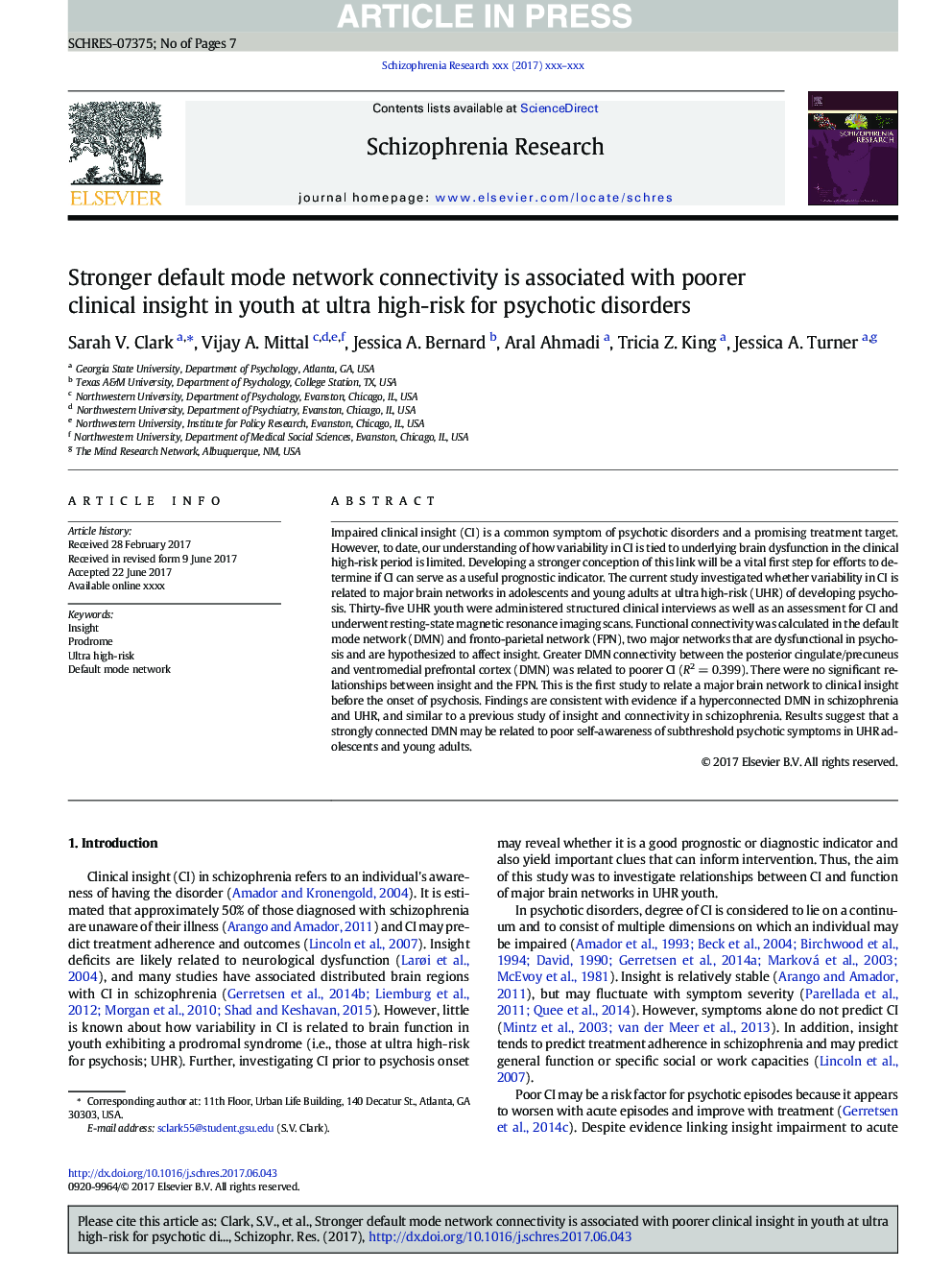| Article ID | Journal | Published Year | Pages | File Type |
|---|---|---|---|---|
| 6821905 | Schizophrenia Research | 2018 | 7 Pages |
Abstract
Impaired clinical insight (CI) is a common symptom of psychotic disorders and a promising treatment target. However, to date, our understanding of how variability in CI is tied to underlying brain dysfunction in the clinical high-risk period is limited. Developing a stronger conception of this link will be a vital first step for efforts to determine if CI can serve as a useful prognostic indicator. The current study investigated whether variability in CI is related to major brain networks in adolescents and young adults at ultra high-risk (UHR) of developing psychosis. Thirty-five UHR youth were administered structured clinical interviews as well as an assessment for CI and underwent resting-state magnetic resonance imaging scans. Functional connectivity was calculated in the default mode network (DMN) and fronto-parietal network (FPN), two major networks that are dysfunctional in psychosis and are hypothesized to affect insight. Greater DMN connectivity between the posterior cingulate/precuneus and ventromedial prefrontal cortex (DMN) was related to poorer CI (R2Â =Â 0.399). There were no significant relationships between insight and the FPN. This is the first study to relate a major brain network to clinical insight before the onset of psychosis. Findings are consistent with evidence if a hyperconnected DMN in schizophrenia and UHR, and similar to a previous study of insight and connectivity in schizophrenia. Results suggest that a strongly connected DMN may be related to poor self-awareness of subthreshold psychotic symptoms in UHR adolescents and young adults.
Related Topics
Life Sciences
Neuroscience
Behavioral Neuroscience
Authors
Sarah V. Clark, Vijay A. Mittal, Jessica A. Bernard, Aral Ahmadi, Tricia Z. King, Jessica A. Turner,
